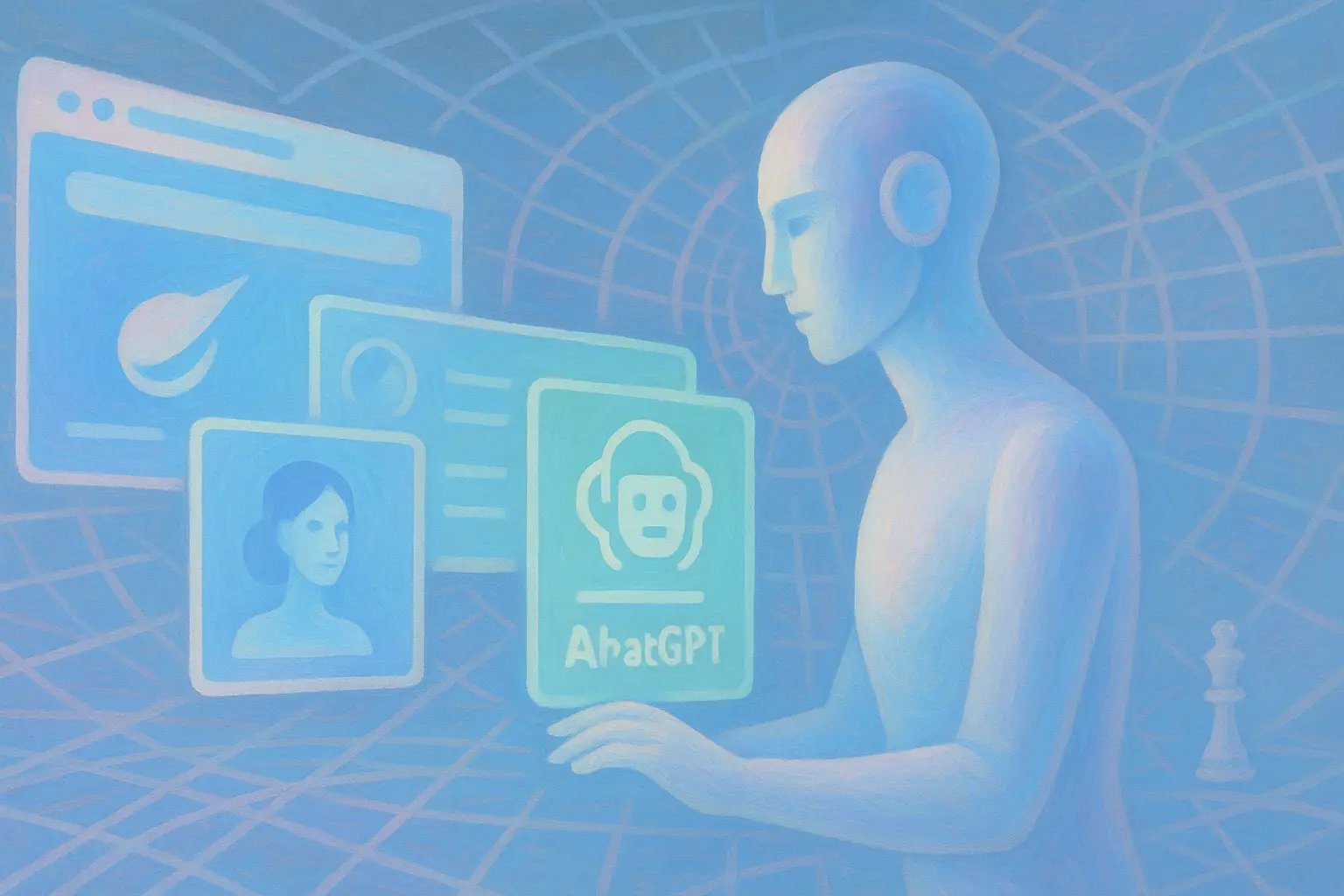
Stealth Mode Model: Quasar Alpha Model
Table of Contents
- 🚀 Introduction to Quasar Alpha
- 🧠 What Makes Quasar Alpha So Unique?
- 🧩 Who Built Quasar Alpha?
- ⚙️ How Does It Perform in Real Use-Cases?
- 🧪 Benchmark Breakdown
- 🛠️ How to Access and Use Quasar Alpha
- 👥 Community Feedback & Insights
- 🎯 Quick Pros and Cons Summary
- 🔮 What Comes Next?
- Frequently Asked Questions (FAQs)
Stealth Mode Model: Quasar Alpha Model
The world of AI is buzzing again—and this time, not because of a flashy release or a new benchmark king, but due to a mysterious contender operating quietly in the background: Quasar Alpha.
On April 4, 2025, users on OpenRouter discovered a new language model with a mind-blowing 1 million token context window, stealthily released with zero fanfare. Suddenly, developers were building full websites in a single prompt. Translation seemed eerily fluent. And still, no one knew where it came from.
So, let's peel back the layers of this mysterious LLM. What is Quasar Alpha? Who built it? Why is it free? Most importantly, should you use it?
🚀 Introduction to Quasar Alpha
Quasar Alpha isn't your everyday LLM. It's more like the AI equivalent of a UFO - high-performing, fast, strangely quiet, and surrounded by speculation.
Here are the standout facts so far:
- Released: April 4, 2025
- Platform: OpenRouter
- Context Window Size: 1 million tokens
- Primary Strength: Coding, Translation
- Benchmark (Aider Polyglot): 54.7% success rate
- Price: Free (as of now)
- Origin: Unknown — possibly OpenAI or SILX AI
Let's unpack this model in practical terms.
🧠 What Makes Quasar Alpha So Unique?
1. The One-Million Token Context Window
This is arguably Quasar Alpha's headline feature.
To give perspective:
| Model | Max Context Window |
|---|---|
| GPT-4o | 128k |
| Claude 3 Opus | 200k |
| Gemini 1.5 Ultra | 1 million (with limits) |
| Quasar Alpha | 1 million (stable) |
Having a 1M context window means it can process long documents, full codebases, or even entire books in a single go. Developers using it via Aider and 16x Prompt have already noted how effortlessly Quasar Alpha handles large refactoring tasks in complex apps.
Want to prompt it with both your codebase and the documentation? No need to chunk or truncate—Quasar can handle it.
2. Skilled With Code
Quasar Alpha excels in programming. On the aider polyglot benchmark, it scored 54.7%, placing it just behind DeepSeek V3 and ahead of Claude 3.5.
Here's a quick benchmark comparison:
| Model | Correct Solutions | Notes |
|---|---|---|
| DeepSeek R1 | 56.9% | Architect mode plus Claude editor |
| DeepSeek V3 | 55.1% | Few-shot style prompting |
| Quasar Alpha | 54.7% | Consistent long-context performance |
| Claude 3.5 Sonnet (editor-free) | 51.6% | Good reasoning, slower output |
| Gemini 2.5 Pro EXP | 72.9% | Highest overall, expensive inference |
It wasn't just about getting the answer right - Quasar Alpha used the correct code-editing format 98.2% of the time, meaning it understands both intent and structure.
3. Free Access
At a time when top models are either locked behind API keys or billed by the token, Quasar Alpha is completely free on OpenRouter.
That fact alone has made developers, researchers, and general tinkerers flood toward it. With no rate limits and massive context, this is a huge research opportunity.
🧩 Who Built Quasar Alpha?
Now here's where the fun begins.
Unlike commercial AI releases from OpenAI or Google, Quasar Alpha appeared with no branding, no announcement, and no official documentation. This mystery triggered rampant speculation in the AI community.
Theory 1: OpenAI Is Behind It
Supporting Evidence:
- API Call Prefix: The model API requests begin with
chatcmpl-, standard for OpenAI. - Token Format: Tool call and function call IDs mimic those of GPT-4/GPT-4o.
- Chinese Tokenizer Bug: As identified on Reddit, it displays a known bug in OpenAI tokenizers (
o200k_base). - Performance Similarity: Based on behavior and performance traits, clustering analysis (posted by Sam Paech) grouped Quasar Alpha close to GPT-4 models.
All this evidence suggests one thing: if it walks like GPT-4, talks like GPT-4, and breaks in exactly the same way... it might just be GPT-4.
But why would OpenAI release it without a label?
It could be A/B tested for encoding quality, inference optimization, or even hardware-specific enhancements. A blog post by 16x Prompt outlined how OpenAI might be running shadow tests before a public rollout.
"Even if it's not GPT-5, it may be infrastructure gearing up for something bigger." - 16x Prompt
Theory 2: SILX AI Is Behind It
This theory is slightly thinner but still intriguing.
Evidence:
- A company called SILX AI has models on Hugging Face titled with the "Quasar" naming convention.
- A Discord user named TroyGPT, claiming affiliation with SILX, responded to queries about Quasar Alpha on OpenRouter's Discord.
This led some to believe Quasar Alpha is part of their research.
However, the sheer scale - processing 10 billion tokens per day, long-context stability, and GPT-style tokenizer bugs - makes it unlikely to originate from a small team like SILX AI.
So where do we land?
🧩 Most likely: It's a "stealth release" from OpenAI, perhaps testing GPT-4 variants or even an early V5 prototype.
⚙️ How Does It Perform in Real Use-Cases?
Benchmarks are great, but what really matters is how it feels to actually use Quasar Alpha.
Context-Based Coding
Multiple YouTubers and testers have shown it navigate complex repos with ease:
- This video shows Quasar generating and editing multiple React components.
- A developer asked it to build a full website, with routes, backend logic, and deployment scripts - all handled from a single prompt.
Translation
Despite being tuned for code, Quasar's multilingual capabilities impressed the team at Nuenki:
"Translation is fast, coherent, and consistent even in 800k token prompts."
With latency lower than Claude but higher than GPT-4o, it's fast enough for real-world workflows.
Memory-Heavy Tasks
Thanks to the 1M token window, users have fed entire books, project wikis, and even multi-megabyte configuration files without running into context limitations.
One Redditor even attempted:
"Let's see if I can ask it to convert a 250-page PDF manual into structured JSON schemas..."
And it nailed it.
🧪 Benchmark Breakdown
Just how good is Quasar Alpha under pressure?
Let's revisit the aider polyglot benchmark, widely respected for multi-language coding evaluation across 225 tasks.
Score Overview
| Rank | Model | % Correct | Edit Accuracy |
|---|---|---|---|
| 1 | Gemini 2.5 EXP | 72.9% | 89.8% |
| 2 | Claude + DeepSeek Hybrid (R1 + Sonnet) | 64.0% | 100.0% |
| 3 | DeepSeek R1 | 56.9% | 96.9% |
| 4 | DeepSeek V3 | 55.1% | 99.6% |
| 5 | Quasar Alpha | 54.7% | 98.2% |
| 6 | o3-mini (medium) | 53.8% | 95.1% |
These numbers place Quasar Alpha firmly in the top tier for coding tasks, especially remarkable for a model released with no marketing or documentation.
🛠️ How to Access and Use Quasar Alpha
Getting started is easy.
Option 1: OpenRouter
Head over to OpenRouter. You can test the model directly in-browser or connect via API.
Option 2: Use It Through 16x Prompt
Follow setup instructions provided here:
16x Prompt Guide
Recommended for:
- Building apps using langchain
- Using Quasar inside a chainlit or Gradio UI
- Automated refactor tools (like Aider)
👥 Community Feedback & Insights
The AI community has been vocal about this strange newcomer.
Reddit threads in r/LocalLLaMA, X/Twitter debates, and YouTube analysis all point to one truth: people are impressed.
Some key quotes:
- "It's like GPT-4 that actually listens."
- "I'm building a product around this model. It's that good."
- "Even if it's a research release, it's better than most production LLMs."
So whether it's from OpenAI, SILX, or an elaborate prank (unlikely!), the reception is undeniably positive.
🎯 Quick Pros and Cons Summary
| Pros | Cons |
|---|---|
| 1M token context – massive input/output capabilities | Unknown support lifecycle (stealth model) |
| Strong coding performance | Identity remains unclear |
| Free and easy to access | Limited documentation |
| Fast translation & multilingual coherence | May lack stability over long-term usage |
🔮 What Comes Next?
Quasar Alpha is still in stealth mode. But if this is a prototype, just imagine what the full release might look like.
Developers across the globe are already integrating it into their workflows. If OpenAI confirms its origin, this could be the prelude to GPT-5, an open-coding assistant, or a dedicated programming LLM.
And if SILX AI is truly behind it? They're about to be on everyone's radar.
Either way, Quasar Alpha proves that long-context LLMs are not just lab experiments anymore. They're here, real, usable, and... largely free.
Got questions or want to share your results with Quasar Alpha? Join the discussion on Reddit, or follow contributors like Sam Paech and 16x Prompt for more insights.
The mystery isn't fully solved. But one thing is certain - Quasar Alpha is a powerful and promising LLM. Whether you're refactoring code or testing model limits, this one should be on your radar.
Frequently Asked Questions
Share this article
Related Articles

ChatGPT Go Free in India: Unlock AI Power 2025!
Explore how OpenAI's ChatGPT Go free offer in India is set to transform AI accessibility, from enhanced features to market impact and strategic benefits.

Atlas vs Comet: AI Browser Battle 2025
Dive deep into the world of AI-native browsers with ChatGPT Atlas and Perplexity Comet. Explore their unique features, philosophies, and the battle that is reshaping how we interact with the web.

ChatGPT Atlas: AI Browser Revolution
Explore how ChatGPT Atlas, OpenAI's groundbreaking AI-powered browser, transforms web browsing with contextual intelligence, personalized automation, and robust privacy controls.
